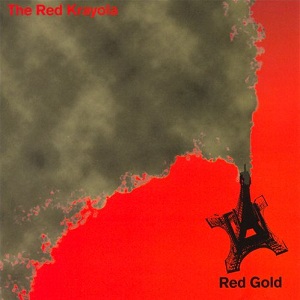
The Velvet Underground & Nico is the debut studio album by the American rock band the Velvet Underground and the German singer Nico, released in March 1967 through Verve Records. It was recorded in 1966 while the band were featured on Andy Warhol's Exploding Plastic Inevitable tour. The album features experimental performance sensibilities and explicit lyrical topics, including drug abuse, prostitution, sadomasochism and sexual deviancy.

Country Joe and the Fish was an American psychedelic rock band formed in Berkeley, California, in 1965. The band was among the influential groups in the San Francisco music scene during the mid- to late 1960s. Much of the band's music was written by founding members Country Joe McDonald and Barry "The Fish" Melton, with lyrics pointedly addressing issues of importance to the counterculture, such as anti-war protests, free love, and recreational drug use. Through a combination of psychedelia and electronic music, the band's sound was marked by innovative guitar melodies and distorted organ-driven instrumentals which were significant to the development of acid rock.

White Light/White Heat is the second studio album by the American rock band the Velvet Underground. Released on January 30, 1968, by Verve Records, it was the band's last studio album with multi-instrumentalist and founding member John Cale. Recorded after band leader Lou Reed fired Andy Warhol, who had produced their debut album The Velvet Underground & Nico, they hired Steve Sesnick as a manager and hired producer Tom Wilson, who had worked on the band's debut. White Light/White Heat was engineered by Gary Kellgren.

Noise rock is a noise-oriented style of experimental rock that spun off from punk rock in the 1980s. Drawing on movements such as minimalism, industrial music, and New York hardcore, artists indulge in extreme levels of distortion through the use of electric guitars and, less frequently, electronic instrumentation, either to provide percussive sounds or to contribute to the overall arrangement.

Angus William MacLise was an American percussionist, composer, poet, occultist and calligrapher, known as the first drummer for the Velvet Underground who abruptly quit due to disagreements with the band playing their first paid show.

Douglas Alan Yule is an American musician and singer, most notable for being a member of the Velvet Underground from 1968 to 1973, serving as the bassist, guitarist, keyboardist and occasional lead vocalist.
Psychedelic folk is a loosely defined form of psychedelia that originated in the 1960s. It retains the largely acoustic instrumentation of folk, but adds musical elements common to psychedelic music.

Red Krayola is an American avant rock band from Houston, Texas formed in 1966 by the trio of singer/guitarist Mayo Thompson, drummer Frederick Barthelme, and bassist Steve Cunningham.

Mayo Thompson is an American musician and visual artist best known as the leader of the experimental rock band Red Krayola.

John Aloysius Fahey was an American fingerstyle guitarist and composer who played the steel-string acoustic guitar as a solo instrument. His style has been enormously influential and has been described as the foundation of the genre of American primitive guitar, a term borrowed from painting and referring mainly to the self-taught nature of the music and its minimalist style. Fahey borrowed from the folk and blues traditions in American roots music, having compiled many forgotten early recordings in these genres. He would later incorporate 20th-century classical, Portuguese, Brazilian, and Indian influences into his work.

The Parable of Arable Land is the first studio album by the Red Crayola. The album was considered psychedelic music when it was introduced, but later assessments describe it as a forerunner to avant/noise rock. With this album as introduction, Ritchie Unterberger assessed the band as a precursor to industrial rock. The album features free improvised pieces involving industrial power tools and a revving motorcycle dubbed "Free Form Freak-Out" played by a group of over 50 people known as "the Familiar Ugly" as well as notable instrumental cameos by label mate and 13th Floor Elevators frontman Roky Erickson.

The Boston Tea Party was a concert venue located first at 53 Berkeley Street in the South End neighborhood of Boston, Massachusetts, and later relocated to 15 Lansdowne Street in the former site of competitor, the Ark, in Boston's Kenmore Square neighborhood, across the street from Fenway Park. It operated from 1967 to the end of 1970. Its closing was due in part to the increasing cost of hiring bands who were playing more and more at large outdoor festivals and arena rock concerts.

Death Chants, Breakdowns & Military Waltzes is a 1963 album by American fingerstyle guitarist and composer John Fahey. Various sources show either a 1963 or 1964 original release. It was Fahey's second release and the first to gain a national distributor.

Corky's Debt to His Father is the only solo LP by Red Krayola leader Mayo Thompson. Recorded in 1970, it was released on the small independent label Texas Revolution but barely distributed at the time; some copies were made available in the 1970s via mail order.
Experimental rock, also called avant-rock, is a subgenre of rock music that pushes the boundaries of common composition and performance technique or which experiments with the basic elements of the genre. Artists aim to liberate and innovate, with some of the genre's distinguishing characteristics being improvisational performances, avant-garde influences, odd instrumentation, opaque lyrics, unorthodox structures and rhythms, and an underlying rejection of commercial aspirations.

God Bless the Red Krayola and All Who Sail With It is the second commercially released studio album by the American avant-rock band Red Krayola. It was released in May 1968 by the independent record label known as International Artists.

Coconut Hotel is an album originally recorded in 1967 by the American avant rock band Red Krayola. The intent was for it to be the band's second album after the release of The Parable of Arable Land, but it was rejected and shelved indefinitely by International Artists. Coconut Hotel would not hit stores till 1995 when it was finally issued by Drag City.

Amor and Language is an EP by the experimental rock band Red Krayola, released in 1995 by Drag City.

Hazel is an album by the experimental rock band Red Krayola, released in 1996 by Drag City.

Red Gold is an EP by the experimental rock band Red Krayola, released in 2006 by Drag City.


















